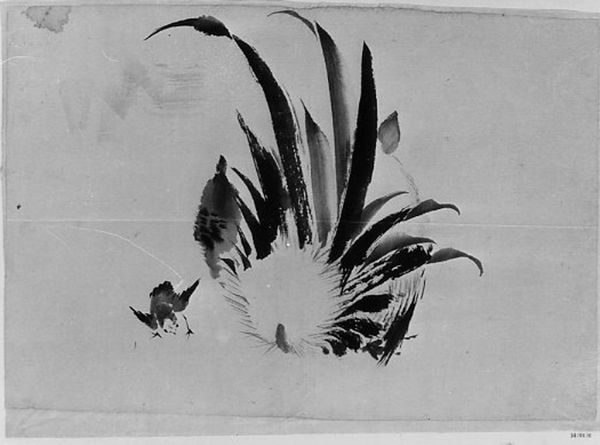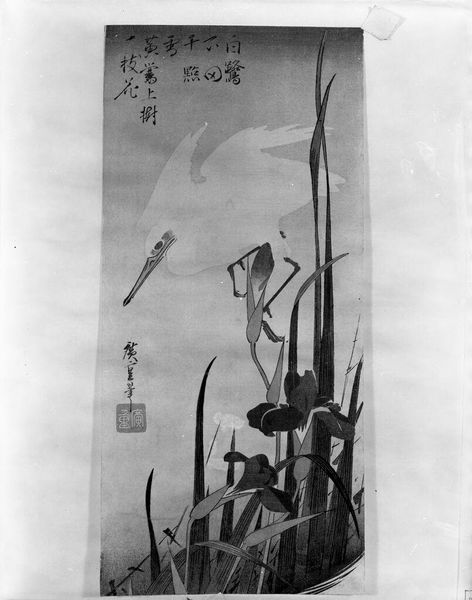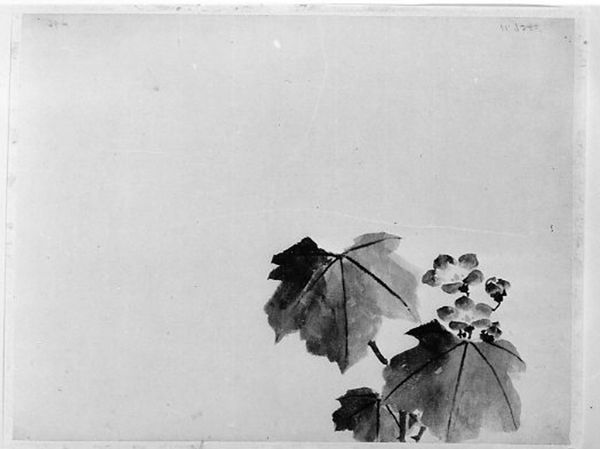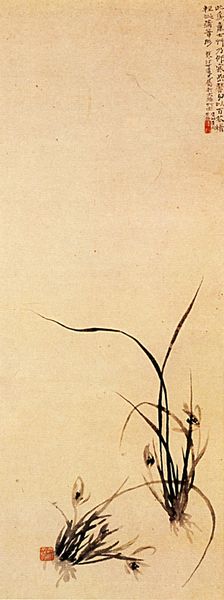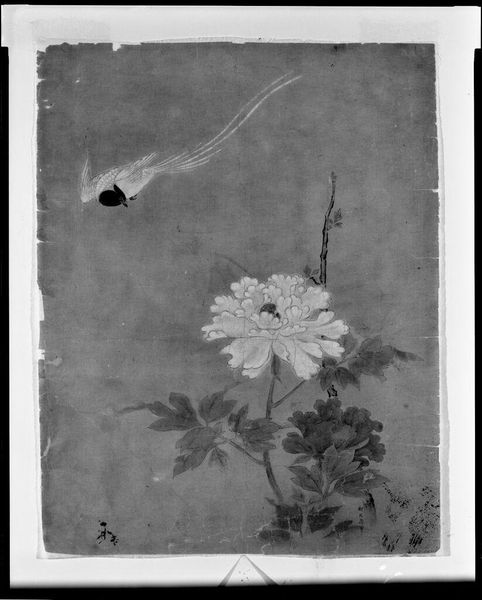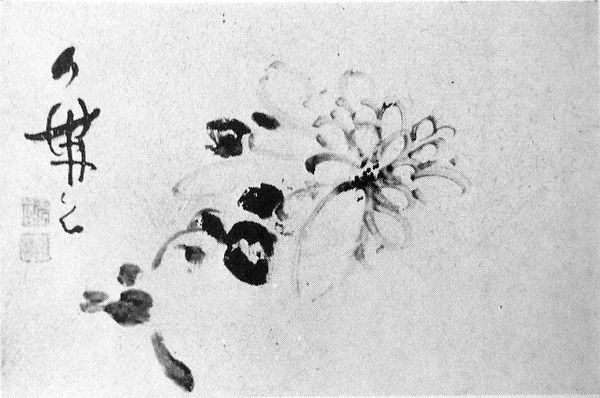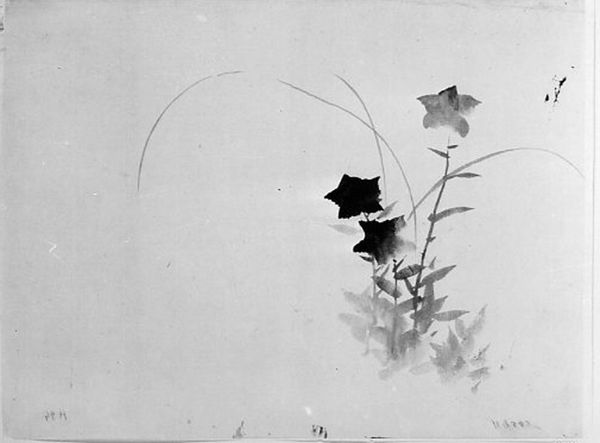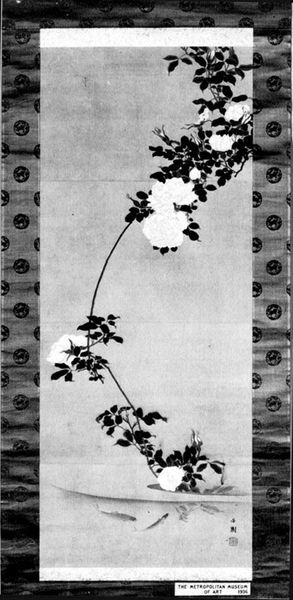
drawing, paper, ink
#
drawing
#
natural shape and form
#
organic
#
asian-art
#
landscape
#
figuration
#
paper
#
ink
#
line
Dimensions: 31 5/8 x 12 5/8 in. (80.3 x 32.1 cm)
Copyright: Public Domain
Curator: This is Matsumura Keibun's "Bush Clover, Grass and Cricket," made sometime between 1779 and 1843. It's an ink drawing on paper. Editor: Immediately, I’m struck by the drawing's starkness. It's simple, elegant even. The ink bleeds ever so slightly into the paper, giving it a kind of hazy, dreamlike quality. Curator: Hazy is a good word for it. What’s really interesting is the use of negative space. Look at how much empty area surrounds the central image of the clover, grass and what seems to be an implied cricket. Editor: Absolutely, that emptiness isn't really empty, is it? It emphasizes the fragility and transience often found in this period of Japanese art. But look closer – the artist’s brushstrokes. You can practically feel the texture of the paper and the varying pressures applied by the brush loaded with ink. That tells us a lot about the artist's mastery of his tools. Curator: Exactly! And it pushes us to ask, what kind of paper, what type of ink? Were these luxury goods accessible only to certain social strata? Moreover, how does the labor involved in their production, and the systems of patronage that might have supported the artist, reflect broader social structures? Was Keibun part of a specific artistic workshop? What apprenticeships did he undertake to achieve such refined skill? Editor: Those are crucial questions. We also need to consider the role this kind of art played in 18th and 19th century Japan. Prints and drawings such as these were often commissioned by wealthy merchants or members of the samurai class. Their taste influenced the type of artwork being produced, which also became status symbols representing taste and cultural affiliation. Curator: And let’s think about what’s represented here—everyday flora and fauna. How do those elements become imbued with meaning based on who is buying the artworks and displaying them? Is it just the appeal of "natural shapes and forms," as some classify it? Editor: I'd argue it's far from 'just' that. It represents a particular cultural view of nature, influenced by philosophical and social norms. Bush clover, grass, and crickets often carry symbolic weight—evoking seasonal change and ideas of simplicity that resonate with broader philosophical currents. So, it’s about more than capturing just a likeness; it’s about shaping perceptions and cementing a cultural identity. Curator: This discussion helps one realize how rich seemingly "simple" art like Keibun's can be. Editor: It serves to remind us that artistic value is always made in specific historical contexts.
Comments
No comments
Be the first to comment and join the conversation on the ultimate creative platform.

